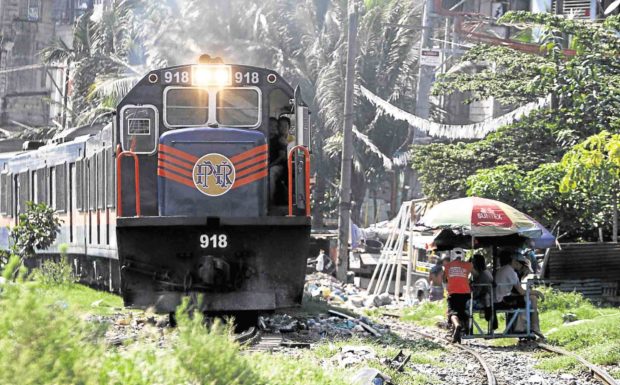
The Duterte administration is reviving a plan to rebuild Luzon’s northern railway network, which would link Manila to the provinces of Tarlac, La Union and Cagayan, the Department of Transportation said. INQUIRER FILE
The Duterte administration is reviving a plan to rebuild Luzon’s northern railway network, which would link Manila to the provinces of Tarlac, La Union and Cagayan.
This was revealed Tuesday by the Department of Transportation (DOTr), which held bilateral talks with counterparts from Russia during the 31st Association of Southeast Asian Nations Summit.
DOTr assistant secretary Leah Quiambao said the Philippines and Russia are exploring cooperation on several areas. This includes a possible grant from Russia to finance a study on the “Northern Luzon railway corridor”, or areas to the north beyond the New Clark City in Pampanga.
“Russia is expected to bring with it its development experience, gained in the course of building its 86,000-kilometers of mainline and 60,000-km of secondary railway lines,” Quiambao said. Details on the grant were not immediately available and definite commitments have yet to be signed.
The DOTr wants to extend the planned Manila-Clark railway line to San Fernando, La Union; Tarlac and Tuguegarao. It said the Japan-funded P316 billion Manila-Clark railway line, comprised of two phases, will start construction by end-2017 or early 2018.
The Northern Luzon railway corridor was last referenced by the department in an August 2015 project brief on the North-South Railway project, which was then part of the Public Private Partnership pipeline.
That project involved a long-haul line from Manila to San Fernando spanning 266-km, an extension from San Jose City in Nueva Ecija to Cagayan Province, and a 55-km branch line from Tarlac Province to San Jose City.
This was part of a broader goal of reviving a once robust Luzon railway system that in the 1970s spanned 900 kilometers linking La Union province in the north to Legazpi City in the Bicol region in the south.
Railway projects in the Philippines are limited to Luzon, with active lines comprised of the Metro Rail Transit Line 3, Light Rail Transit Line 1, LRT-2, and the Philippine National Railways network in Metro Manila and nearby provinces.
Being built by the private sector are the extension of LRT-1 to Cavite province and the MRT-7 from Quezon City to Bulacan province.
The Duterte administration also said it would pursue a Japan-funded P360 billion Metro Manila subway project, which would link Quezon City and the Ninoy Aquino International Airport. It is likewise targeting a loan deal with China for a train line connecting Manila to Matnog, Sorsogon in the Bicol region of southern Luzon.
Quiambao said on Tuesday the Philippines is also eyeing technology from Russia in the areas of road emergency response, truck weight monitoring, air navigation, and maritime training.
She said both countries also discussed the possibility of launching direct flights between Manila and Moscow.
Philippine Airlines president Jaime Bautista said on Tuesday that flights to Russia were “not part of our short-term plan.”
“We will study and evaluate,” Bautista said in a text message. /cbb